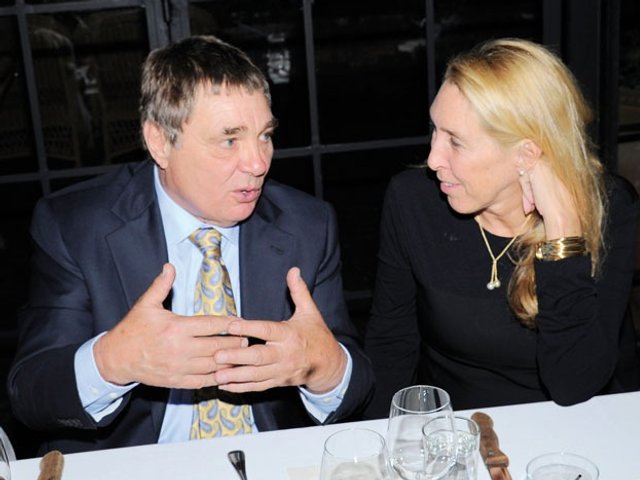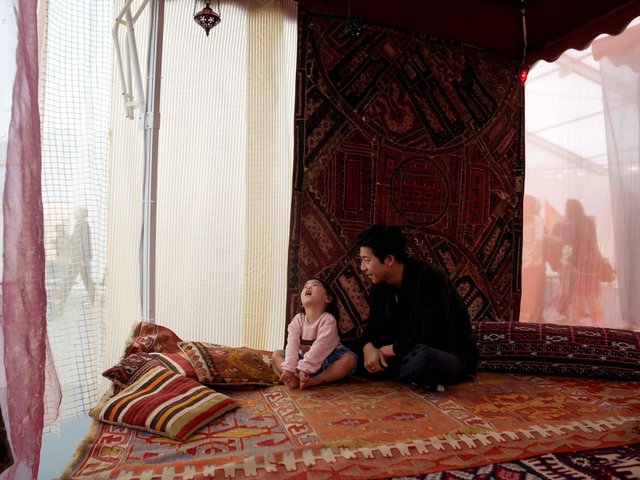New York
The centrepiece of a major survey of Chris Burden’s work is an installation that the controversial California-based performance artist and sculptor proposed to destroy earlier this year. Conservators at the Orange County Museum of Art, California, had to persuade Burden to let them treat his sprawling tableau A Tale of Two Cities, 1981, in the run-up to “Extreme Measures”, which opens at the New Museum, New York, on 2 October (until 12 January 2014).
The work, which is among Burden’s earliest large-scale sculptures, depicts two city-states at war. It features more than 5,000 toys arranged on a base of sand and rocky outcrops, surrounded by live plants and coral. Until recently, the piece was in such poor condition that the artist suggested blowing it up rather than agree to the proposed treatment. “I never said it couldn’t be done, but I was unsure whether it could be resolved in time for the forthcoming show,” Burden says. Such reticence “is not an uncommon response to artists seeing their work in a certain level of condition”, says the California museum’s conservator Donna Williams.
The Orange County museum bought A Tale of Two Cities in 1987 for a five-figure sum. According to Burden’s original contract with the institution, “the artist retains the right to modify the piece”, but the museum must approve any modifications. The violent destruction Burden proposed would have served as a conceptual and literal ending to the battle depicted in the installation. “That was more metaphoric—I was trying to illustrate the fluid nature of the work,” Burden says. “The work of art would still exist, but it would be rubble.”
“As you can imagine, the museum really didn’t want Chris to explore that option,” Williams says. Burden’s contract was not altered as a result of the restoration, according to a spokeswoman for the museum.
The California and New York museums convinced Burden to proceed by preparing a small, fully restored section of the sculpture. “Once he saw the first mock-up, it was like a problem had been solved, and he was on to asking about specific toys,” Williams says. Even after Burden agreed to the treatment, however, he nearly insisted that the piece be left out of the survey. (It was not the only piece the artist was hesitant about including: his initial proposal for the show involved covering the institution’s exterior with sculptures while leaving the inside nearly empty—a tactic to avoid revisiting earlier work, according to the New York Times.) Burden finally approved the inclusion of A Tale of Two Cities in mid-August, five weeks into its eight-week treatment.
The Orange County museum paid for two-thirds of the $50,000 project and the New Museum financed the rest. The work “was not in an exhibitable state” before the treatment, says Lisa Phillips, the director of the New Museum. Its cardboard bases had grown mould and warped, causing the miniature roads and buildings to topple. It took one conservator five weeks simply to vacuum sand and residue out of each individual component. Meanwhile, Williams and her team searched eBay for replacements for broken or lost toys. Others they repaired by hand.
Glued in place
After restoring each piece, conservators permanently glued the toy cities onto new aluminium bases. (Before the restoration, the cities’ individual components were loose and were reconfigured for every installation.) “I assume that is because it wasn’t a particularly big decision for him, but it was a big decision in the life of the work,” Williams says.
Now, A Tale of Two Cities “looks bright and crisp—the roadways and airports all look new”, says Dennis Szakacs, the director of the Orange County museum. “When it was shown as recently as 2007, I had a sneaking feeling that I was going to be unhappy [with the state of the work], so I didn’t go to see it,” Burden says. “I’m really pleased it has been brought back to life.”
• For exhibition preview, see p34
Originally appeared in The Art Newspaper as 'Burden’s war saved from brink'



